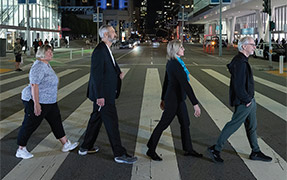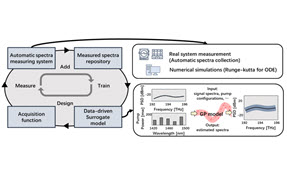BioBus Inspires Budding Nanoscientists
Nanoscientists outfit mobile teaching lab with microscopes.
Public school students in New York are learning about nanoscale imaging in a mobile science lab equipped with research-grade scanning electron microscopes (SEMs) that can reveal anatomical and physiologic characteristics of organisms barely visible to the naked eye.
The BioBus parks outside a K–12 (kindergarten to 12th grade) school every weekday to offer a hands-on, inquiry-based science education experience in an effort to inspire a new generation with the wonders of nanotechnology and the rewards of a career in science and technology.
Nanotechnology is a growing field in which the number of jobs and commercial products is expected to double in size over the next three years, according to BioBus creators, writing in the SPIE Newsroom.
And yet, authors Sarah Weisberg and Ben Dubin-Thaler of Cell Motion Laboratories and Robert Gordon of Hitachi High Technologies America say that large numbers of the population have no understanding of what nanotechnology is and are “uninspired, underprepared, and chronically underrepresented in science and technology occupations.”
The 40-foot-long BioBus, a converted transit bus equipped with computers and microscopes powered by solar panels on the roof, is intended to address that problem. It also serves as an educational lab to develop curriculum and best practices for educators to effectively introduce electron microscopy and/or nanoscience in grade-school classrooms.
Hitachi provides its tabletop electron microscopes to the traveling science lab and to stationary classrooms across the USA as part of its effort to increase achievement in science, technology, engineering, and mathematics (STEM) education.

BioBus lesson plans were developed according to the principles of inquiry-based learning, and instructors guide the students through four levels of inquiry known as limited, guided, structured, and open.
“Their science learning experience mimics and prepares them for actual research environments,” the authors say. “Our goal is to place our students on research and teaching internships at the BioBase (our community science laboratory) or at academic and industry research institutions.”
Teachers typically introduce the students to Daphnia, a genus of common freshwater crustaceans that is only a few millimeters long. “During a typical 45-minute BioBus lesson, however, we show students how to use a stereomicroscope to observe an entire Daphnia body (i.e., limited inquiry). We then prompt the students with a question about the anatomy or behavior of Daphnia.
“We allow them to use the microscopes as they try to answer this question (i.e., guided/structured inquiry). More often than not, the high-resolution images of Daphnia are so startling to the students that they are provoked to ask their own questions. When this happens, we encourage the students to answer the questions using methods that they devise themselves (i.e., open inquiry).”
The students also receive training on a Hitachi TM3030 tabletop SEM and explore the physiology of the Daphnia, magnifying the organism even further to reveal new structures that had previously been invisible, and measuring the structures that they observe.
“We think that an SEM experience is most powerful when the instrument is used in conjunction with light microscopy and inquiry-based learning,” they say.
“Ideally, the BioBus experience acts as a catalyst for new questions that the students can then answer on their own,” the authors explain. “Indeed, in many cases, the products of our students’ inquiries become the subject of inquiry for future students. For example, our library of SEM Daphnia samples was prepared by two students (aged 10 and 15) who participate in a weekly after-school program at the BioBase.”
• SPIE Newsroom article: spie.org/biobus
• Hitachi Learning Lab: inspirestemeducation.us/learning-labs
Have a question or comment about this article? Write to us at spieprofessional@spie.org.
To receive a print copy of SPIE Professional, the SPIE member magazine, become an SPIE member.





